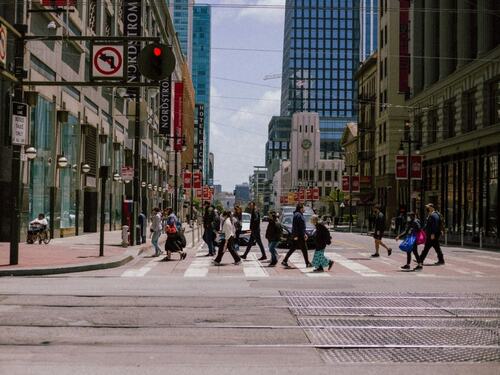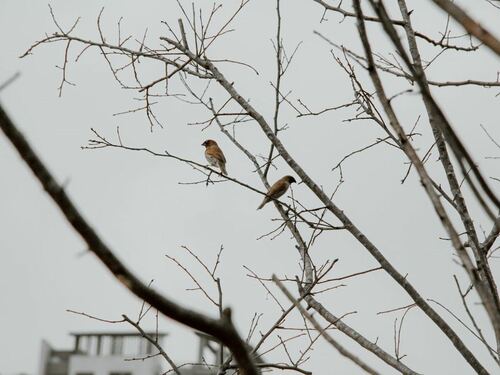How Urban Tree Loss is Impacting Wildlife in 2024
Introduction
As cities continue to expand and development encroaches on natural habitats, the loss of urban trees has become an increasingly pressing concern. These green spaces play a vital role in supporting diverse populations of wildlife, from birds and insects to small mammals. However, the alarming rate at which trees are being cleared to make way for new construction is having a profound impact on the delicate balance of urban ecosystems.
In the last decade, cities across the globe have seen a drastic decline in their tree canopy cover, with some major metropolitan areas losing over 30 percent of their trees. This trend is driven by a combination of rapid population growth, aggressive infrastructure development, and shortsighted urban planning that fails to prioritize green spaces. The downstream effects on local wildlife have been devastating, leading to habitat fragmentation, disrupted food chains, and the local extinction of numerous species.
Drivers of Urban Tree Loss

A Busy San Francisco Street – Photo by Josh Hild on Unsplash
The primary drivers behind the alarming rate of urban tree loss can be traced back to several key factors.
Rapid Population Growth and Urban Sprawl
As the world’s population continues to swell, cities are expanding outward to accommodate the influx of new residents. This inexorable march of urbanization often comes at the expense of green spaces, as undeveloped land is cleared to make way for new housing, commercial buildings, and transportation infrastructure. According to a recent study by the United Nations, the global urban population is projected to grow by 2.5 billion people by 2050, with much of this growth concentrated in rapidly developing regions of Asia and Africa. Unless cities implement comprehensive urban forestry programs to preserve and expand their tree canopies, this population boom will inevitably lead to further loss of vital green spaces.
Infrastructure Development
The push to build new roads, bridges, and other essential infrastructure in cities has also contributed significantly to the decline of urban trees. Construction projects often require the large-scale removal of trees, either to clear the way for new development or to make space for staging and equipment storage. This issue is compounded by the fact that many cities lack robust tree protection policies , allowing developers to remove healthy trees with minimal oversight and mitigation requirements. Without stronger regulations and enforcement mechanisms in place, the relentless march of infrastructure development will continue to chip away at urban forests.
Insufficient Urban Forestry Management
In many cities, the management of urban trees is an afterthought, with limited budgets, outdated planting plans, and a lack of proactive maintenance. This results in a vicious cycle where trees are allowed to decline, increasing the risk of them being removed due to safety concerns or being deemed unsuitable for the urban environment.
Effective urban forestry requires a comprehensive, long-term strategy that addresses everything from species selection and planting locations to ongoing care and replacement of aging trees. Without a concerted, well-funded effort to maintain and expand the urban tree canopy, cities will struggle to keep pace with the losses.
Key challenges in urban forestry management include:
- Limited funding for tree planting and maintenance programs
- Lack of trained arborists and urban forestry professionals
- Outdated tree inventories and management plans
- Insufficient public awareness about the importance of urban trees
- Conflicts within urban infrastructure (e.g., sidewalks, utilities)
To address these challenges, cities need to prioritize urban forestry in their budgets and long-term planning processes. This may involve creating dedicated urban forestry departments, partnering with local universities for research and training, and implementing advanced tree inventory systems using GIS technology .
The Impact on Urban Wildlife

Birds Perch on Bare Winter Branches – Photo by Leo Zhao
The consequences of urban tree loss on local wildlife populations are both profound and far-reaching. As green spaces vanish, the delicate ecosystems that have developed within them are thrown into disarray, leading to a cascade of negative effects:
Habitat Fragmentation and Displacement
When trees are cleared, the habitats of countless bird, insect, and small mammal species are fragmented or destroyed entirely. This forces these animals to either relocate to increasingly scarce green patches or to simply perish, unable to adapt to the new urban landscape.
The consequences of habitat fragmentation include:
- Reduced breeding success for many species
- Increased vulnerability to predators
- Limited access to food and water resources
- Disrupted migration patterns
- Genetic isolation of populations, leading to reduced biodiversity
Urban ecologists have observed entire bird and pollinator communities disappearing in some areas as their food sources and nesting sites vanish. Even small-scale tree removal can have an outsized impact, as it severs the crucial corridors that allow wildlife to move between habitats.
Disrupted Food Chains
The loss of urban trees doesn’t just displace wildlife—it also disrupts the complex food webs that sustain them. Many bird and insect species rely on the flowers, fruits, and insects that thrive in healthy tree canopies. When these resources vanish, it creates a cascading effect that reverberates up and down the food chain.
Removing trees from an urban ecosystem has far-reaching consequences that wildlife cannot easily adapt to. Pollinators like bees and butterflies that feed on nectar and pollen from urban trees are suddenly left without a food source. This, in turn, impacts the birds and small mammals that depend on those pollinators for their own sustenance.
Increased Risk of Local Extinction
As urban tree loss continues unabated, the viability of many wildlife species within city limits is being pushed to the brink. Without access to the resources and habitat they need to survive and thrive, local populations face a growing risk of complete extirpation.
Researchers are already observing the first signs of local extinctions in some cities, particularly for more sensitive or specialized species. As green spaces keep shrinking, the window for these animals to adapt or relocate is rapidly closing. Without immediate action, entire components of our urban ecosystems could be lost.
Practical Solutions for Preserving Urban Forests

A Group of People Work Together to Plant Trees
Reversing the tide of urban tree loss will require a multipronged approach that addresses the root causes of the problem. Here are some of the key strategies cities can implement to preserve and expand their vital green spaces:
Strengthening Tree Protection Policies
Local governments must enact and enforce strict regulations around tree removal, mandating that developers obtain permits, submit mitigation plans, and replace any trees that are cut down. These policies should also include provisions for protecting heritage trees and other ecologically valuable specimens.
Expanding Urban Tree Canopy
Cities should set ambitious targets for increasing their overall tree canopy coverage, investing in large-scale planting initiatives and prioritizing the strategic placement of new trees to maximize their ecological benefits.
Effective strategies for expanding urban tree canopy include:
- Incorporating trees into new infrastructure projects
- Transforming vacant lots into urban forests or community gardens
- Working with residents to plant trees on private property
- Creating green corridors along streets and highways
- Implementing “right tree, right place” principles to ensure long-term success
By focusing on these strategies, cities can significantly increase their tree cover while also creating more interconnected green spaces that benefit both wildlife and human residents.
Integrating Green Infrastructure
As cities build new roads, buildings, and other essential infrastructure, they should make a concerted effort to incorporate green elements, such as green roofs , living walls, and permeable pavements. These nature-based solutions not only support urban wildlife but also provide a host of other environmental and public health benefits.
Improving Urban Forestry Management
Cities must dedicate sufficient resources to the ongoing care and maintenance of their urban forests, investing in comprehensive inventory systems, proactive pruning and disease management, and strategic tree replacement programs. This holistic approach will help ensure the long-term viability and resilience of urban green spaces.
Engaging the Community
Educating the public about the importance of urban trees and involving residents in stewardship efforts can generate grassroots support for conservation initiatives. This might include:
- Organizing volunteer tree-planting events
- Implementing citizen science programs to monitor local wildlife
- Conducting educational campaigns highlighting the ecological and economic value of urban forests
- Creating “adopt-a-tree” programs for local residents and businesses
- Partnering with schools to incorporate urban forestry into environmental education curricula
By fostering a sense of ownership and connection to urban trees, cities can create a more engaged and environmentally conscious community that will support long-term conservation efforts.
Measuring Success and Adapting Strategies

Workers Monitor the Health of City Trees
As cities implement these solutions, it’s crucial to monitor their effectiveness and adapt strategies as needed. This involves:
- Regular tree inventories and canopy assessments
- Wildlife population surveys to track the impact on local ecosystems
- Economic analysis of the benefits provided by urban forests (e.g., energy savings, air quality improvements)
- Community surveys to gauge public awareness and support for urban forestry initiatives
By collecting and analyzing this data, cities can refine their approaches, allocate resources more effectively, and demonstrate the tangible benefits of urban forest conservation to policymakers and the public.
Conclusion
The loss of urban trees is not just a cosmetic issue—it’s a profound threat to the delicate balance of our urban ecosystems. By understanding the drivers behind this trend and taking proactive steps to preserve and expand our urban forests, we can ensure that wildlife continues to thrive in our cities for generations to come.
If you’re concerned about the state of urban tree cover and its impact on local wildlife in your area, contact Arborist Now to learn more about our professional tree care services. Our team of certified arborists can assess the health of your urban forest, develop customized management plans, and provide guidance on how to support thriving wildlife populations.


